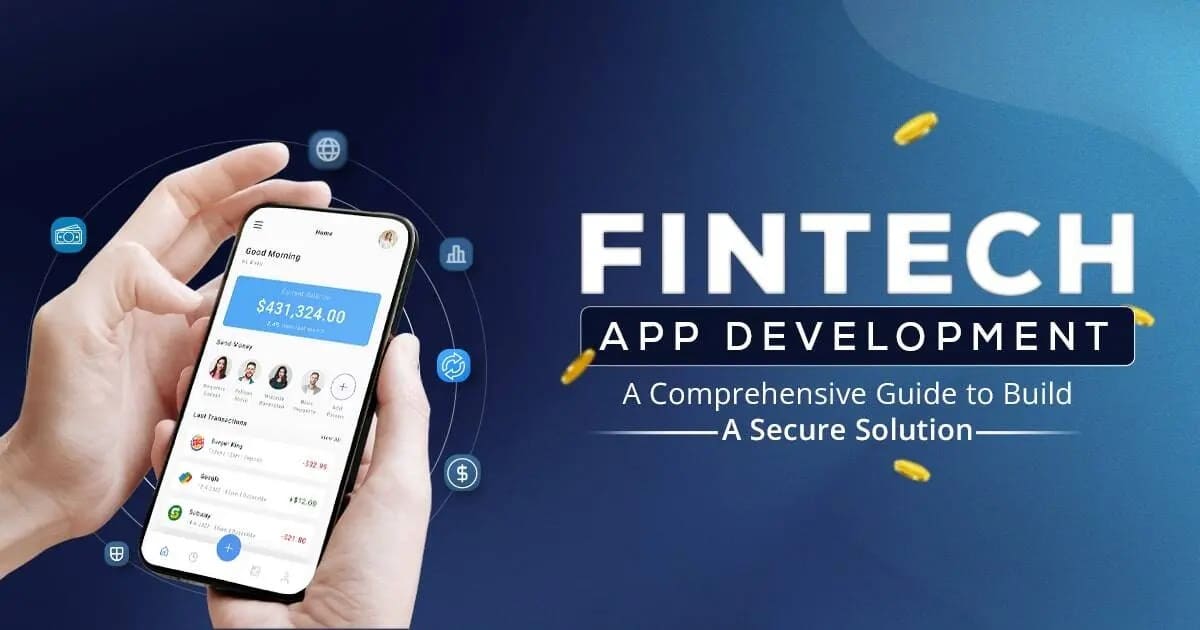In the rapidly evolving landscape of financial technology, creating a successful fintech app requires a combination of innovation, user-centric design, and adherence to rigorous security standards. As we step into 2024, the fintech industry continues to redefine the way we manage, invest, and interact with our finances.
This comprehensive guide will walk you through the key steps involved in building a fintech app that stands out in the competitive market.
1. Define Your Fintech App’s Purpose and Features:
Clearly outline the primary purpose of your app – whether it’s for payments, investments, budgeting, or a combination of services.
Identify the core features that will set your app apart. This could include secure login, real-time transactions, investment tracking, financial analytics, etc.
2. Conduct Market Research:
Analyze the existing fintech landscape to understand market trends, user preferences, and potential gaps in services.
Identify your target audience and tailor your app’s features to meet their specific needs.
Also, Read This Post: Role of Wind Loan Software for Financial Services
3. Choose the Right Technology Stack:
Select the appropriate technology stack for your app, considering factors like scalability, security, and development speed.
Decide between native or cross-platform development based on your target audience and budget.
4. Prioritize Security:
Security is paramount in fintech. Implement end-to-end encryption, two-factor authentication, and other robust security measures to protect user data.
Comply with relevant data protection regulations and obtain necessary certifications.
5. User-Friendly Design:
Invest in an intuitive and user-friendly interface. Conduct usability testing to ensure a seamless user experience.
Prioritize accessibility features to make your app inclusive for all users.
6. Seamless Onboarding Process:
Simplify the onboarding process to reduce friction for new users. Consider incorporating features like biometric authentication for a secure yet convenient login.
Clearly communicate the value proposition of your app during onboarding.
7. Integration with Financial Institutions:
Establish partnerships with banks and other financial institutions to enable seamless transactions and data synchronization.
Ensure compliance with Open Banking standards to enhance interoperability.
8. Implement AI and Machine Learning:
Leverage AI and machine learning algorithms to offer personalized financial insights, investment recommendations, and fraud detection.
Continuously train your models to improve accuracy and relevance.
Also, Read This Post: What is Artificial Intelligence
9. Regulatory Compliance:
Stay informed about financial regulations in the regions you operate. Build your app to comply with Know Your Customer (KYC) and Anti-Money Laundering (AML) regulations.
Work closely with legal experts to navigate complex compliance requirements.
10. Continuous Testing and Quality Assurance:
Implement a robust testing strategy to identify and fix bugs, security vulnerabilities, and performance issues.
Regularly update your app to introduce new features, security patches, and improvements based on user feedback.
11. User Education and Support:
Provide educational resources within the app to help users understand its features and maximize its benefits.
Establish responsive customer support channels to address user queries and concerns promptly.
12. Launch and Marketing:
Plan a strategic launch, considering factors like timing, target audience, and competition.
Invest in marketing efforts to create awareness and attract users. Utilize digital channels, social media, and partnerships for effective promotion.
Building a fintech app is a dynamic and iterative process. Stay agile, adapt to user feedback, and keep pace with industry advancements to ensure your app remains relevant and competitive in the ever-changing fintech landscape.
13. Data Analytics for Improved User Insights:
Implement robust data analytics tools to gather insights into user behavior, preferences, and engagement patterns.
Leverage analytics data to refine your app’s features, personalize user experiences, and identify areas for improvement.
14. Implementing Blockchain Technology:
Explore the integration of blockchain for enhanced security, transparency, and decentralized financial transactions.
Understand the potential use cases of blockchain in fintech, such as smart contracts and secure cross-border transactions.
Also, Read This Post: How Blockchain Technology Helps Businesses Solve Issues
15. Regulatory Sandboxes and Compliance Testing:
Consider participating in regulatory sandboxes where available to test your app in a controlled environment.
Regularly conduct compliance testing to ensure adherence to evolving regulatory frameworks.
16. Gamification for User Engagement:
Incorporate gamification elements to make financial activities more engaging and rewarding for users.
Introduce challenges, achievements, or loyalty programs to encourage consistent app usage.
17. Internationalization and Localization:
Plan for international expansion by designing your app architecture to accommodate multiple languages, currencies, and regional regulations.
Localize your app’s content and user interface to create a more personalized experience for users in different regions.
18. Social Integration and Collaboration:
Allow users to connect and share financial insights within the app. Social integration can enhance user engagement and foster a sense of community.
Explore collaboration opportunities with other fintech apps or financial influencers for cross-promotion.
19. Continuous Monitoring and Incident Response:
Establish a robust system for monitoring app performance, security incidents, and user feedback.
Develop a comprehensive incident response plan to address any security breaches or disruptions promptly.
20. Future-Proofing Your Fintech App:
Stay informed about emerging technologies and industry trends to future-proof your app.
Build a flexible architecture that allows for seamless integration of new features and technologies as they evolve.
21. User Feedback Loops:
Implement mechanisms for collecting user feedback within the app. Regularly analyze this feedback to identify areas for improvement.
Actively engage with user communities through surveys, forums, or beta testing programs to gather qualitative insights.
22. Collaboration with Fintech Ecosystem:
Explore partnerships with other fintech companies, startups, or established players in the ecosystem.
Collaborate on mutually beneficial projects, share resources, and tap into each other’s expertise to create a more comprehensive fintech experience.
Remember, building a successful fintech app is not just about features; it’s about delivering value and building trust. Keep refining your app based on user feedback, industry advancements, and changing regulatory landscapes to ensure its sustained success in the dynamic world of financial technology.


